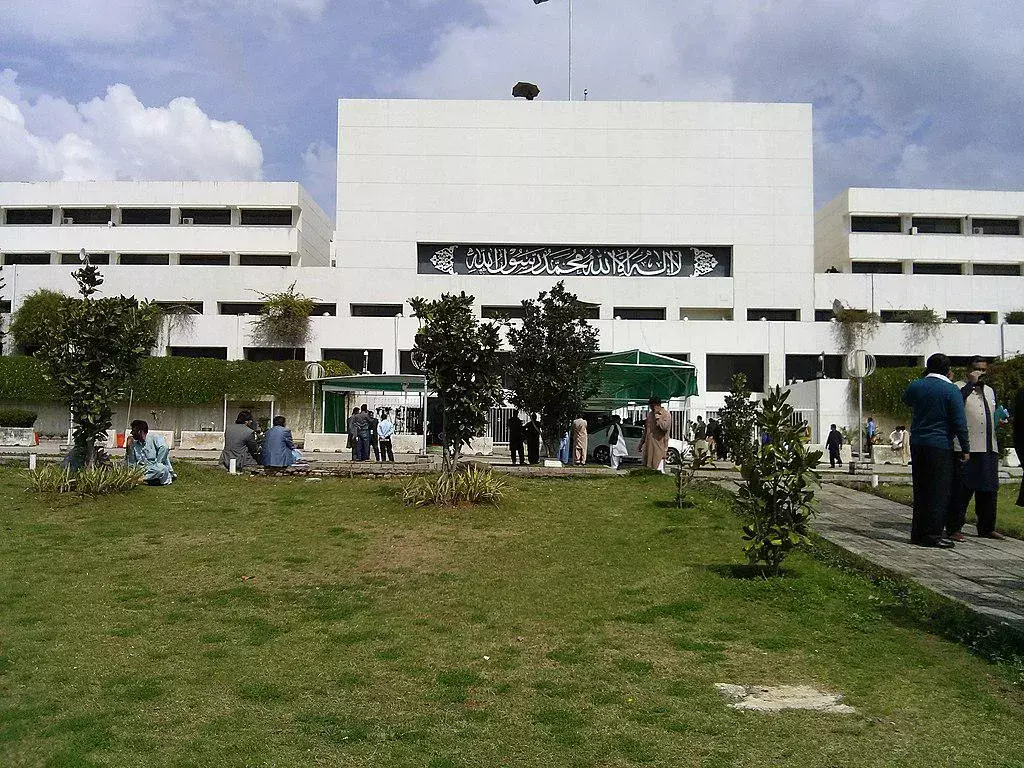Parliament House

- Parliament House in Islamabad is the legislative seat of Pakistan, serving as the home of the National Assembly and Senate. Located in the heart of the Red Zone, near other key government buildings such as the Supreme Court of Pakistan and the Prime Minister’s Office, this grand structure stands as a symbol of democracy and governance in the country. Inaugurated in 1986, the building was designed by the famous Pakistani architect Edward Durell Stone, featuring a modern yet imposing architectural style with influences from Islamic and Mughal designs. The white-marble façade and symmetrical design make it one of the most recognizable landmarks in the capital.
- Inside Parliament House, the building is equipped with state-of-the-art facilities, including large assembly halls, committee rooms, offices for ministers, and press galleries. The main National Assembly Hall is where elected representatives from across the country gather to debate policies, pass laws, and discuss national issues. The Senate Chamber, located within the complex, is used for deliberations by the upper house of Parliament. The interior reflects a blend of traditional Pakistani artistry and modern furnishings, creating an environment that fosters deliberation and governance. The public and dignitaries visiting Parliament are often given guided tours to witness the democratic process in action.
- One of the most notable aspects of Parliament House is its role in major national events and decision-making. It has hosted historic sessions, including the passage of important constitutional amendments, budget announcements, and discussions on international relations. The building has also welcomed foreign delegations, diplomats, and world leaders, emphasizing Pakistan’s commitment to diplomatic engagement and legislative development. The Pakistan flag and national emblem displayed on the front of the building highlight the spirit of unity and patriotism associated with the institution.
- Although security restrictions limit public access, visitors can admire the building from outside, especially from the Constitution Avenue viewpoint. Occasionally, delegates, students, and researchers are allowed guided tours, offering insight into Pakistan’s governance system. The Parliament House remains a center of power and decision-making, playing a crucial role in shaping the country’s laws, policies, and future direction. It stands not only as a symbol of democracy but also as a testament to Pakistan’s commitment to parliamentary governance.
